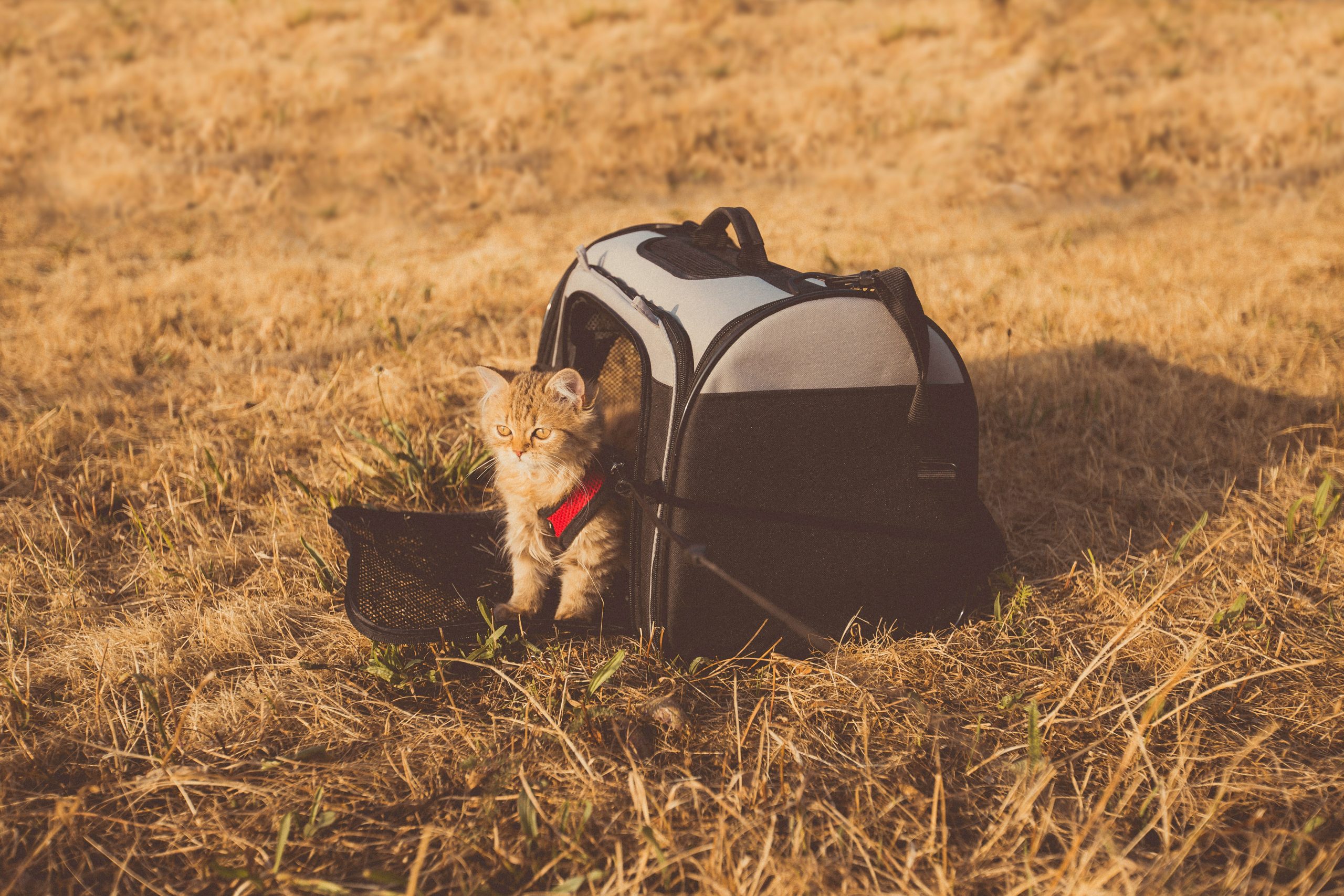Travelling with a cat can prove to be challenging, as cats are known for their preference for routine and familiar surroundings. However, with proper preparation and the right equipment, you can make the journey as comfortable as possible for both you and your feline companion. One must-have item when travelling with a cat is a cat carrier. In this blog post, we will provide you with eight useful tips for travelling with a cat and highlight the importance of a cat carrier in ensuring your cat’s comfort and safety.
1. Choosing the Right Cat Carrier
When it comes to travelling with a cat, having the correct cat carrier is crucial. There are various types of cat carriers available, but it is essential to choose one that provides both comfort and security for your cat. Look for a carrier that has a front and top opening, as this will give you and your cat multiple options for entry and exit. Additionally, a carrier with a removable top can make it easier to remove your cat without causing unnecessary stress.
Choosing a carrier that provides ample space for your cat to comfortably stand, turn around, and lie down is also super important. Larger cat breeds, such as Maine Coons, may require carriers designed for dogs to ensure adequate space. Moreover, consider placing a cosy blanket in the carrier to create a familiar and comfortable environment for your cat.
2. Preparing Your Cat for Travel
Before embarking on a journey with your cat, it is crucial to acclimate them to the cat carrier and travel routine. Allow your cat to explore the carrier in the comfort of your home by leaving the carrier with the top off in a quiet spot. This will help your cat associate the carrier with their regular routine and reduce anxiety during travel.
To further prepare your cat for travel, it is recommended to schedule an appointment with your veterinarian. Your veterinarian can assess your cat’s temperament and overall health and provide advice on anxiety management during travel. They may recommend medications or supplements to ease your cat’s anxiety, depending on their specific needs.
3. Travelling by Car
When travelling by car, it is essential to ensure your cat’s safety and comfort. Level the carrier in the vehicle to provide a secure and stable environment for your cat. Additionally, consider buckling the carrier with a seat belt to prevent it from shifting during the journey.
For longer car trips, offer small amounts of food and water to your cat in the carrier. However, it is important to note that some cats may experience motion sickness, so consult your veterinarian for appropriate feeding guidelines before the trip. It is also advisable to place absorbent pads in the carrier and have cleaning supplies readily available in case of accidents.
4. Travelling by Airplane
If you plan to travel by aeroplane with your cat, it is essential to familiarise yourself with the airline’s specific requirements and restrictions beforehand. Most airlines have guidelines regarding carrier size, weight, and documentation. Ensure that your cat carrier meets the airline’s specifications to avoid any issues during the journey.
A soft carrier with a waterproof bottom is often preferred for air travel, as it provides comfort and flexibility. However, it is crucial to have multiple entry and exit options to facilitate security checks and allow your cat to feel less confined. During security screenings, you will be required to remove your cat from the carrier, so consider using a harness and leash for added safety.
5. Consulting with Your Veterinarian
When it comes to travelling with a cat, your veterinarian is an invaluable source of information and guidance. If you anticipate that your cat may experience anxiety during travel, consult your veterinarian well in advance to discuss potential preventive measures and suitable treatments. They will consider your cat’s age, temperament, and overall health when recommending medications or supplements to alleviate anxiety.
It is advisable to try any prescribed medication or supplement at home before the trip to ensure your cat tolerates it well and does not have any adverse reactions. Your veterinarian can also provide additional advice on vaccinations, bloodwork, and any special documentation required for travel, especially if you plan to travel internationally.
6. Packing Essential Supplies
To ensure your cat’s well-being during travel, pack essential supplies that will cater to their needs. These supplies include:
Food and water: Bring small amounts of your cat’s regular food and offer them at appropriate intervals during the journey. Ensure that you have access to clean water for your cat as well.
Cleaning supplies: Accidents can happen during travel, so pack paper towels, pet-safe cleaners, and odour-neutralising solutions to clean up any messes promptly.
Litter box: If possible, bring your cat’s familiar litter box and litter from home. Cats are sensitive to scents, and providing a familiar litter box will help maintain a sense of security and facilitate proper elimination.
Blankets and toys: Pack your cat’s favourite blankets and toys to provide comfort and familiarity during the journey. These items will help reduce stress and make the travel experience more pleasant for your cat.
7. Creating a Familiar Environment
Cats are creatures of habit, and creating a familiar environment during travel can help alleviate anxiety. Place a familiar blanket or bed inside the carrier to provide a comforting scent and make your cat feel more at ease. Additionally, consider using pheromone sprays, such as Feliway, which mimic natural feline pheromones and have a calming effect on cats.
Maintaining a consistent routine and schedule during travel can also help reduce stress. Stick to your cat’s regular feeding and playtime schedule as closely as possible. Familiarity and predictability will help your cat feel more secure and settled during the journey.
8. Ensuring Safety and Security
The safety and security of your cat should be a top priority when travelling. Ensure that your cat is properly secured within the carrier at all times, especially during transportation. Cats can become frightened and attempt to escape, so always double-check that the carrier is securely closed and latched.
Identification is crucial in case of separation, so make sure your cat is microchipped and wearing a collar with an ID tag containing your contact information. This will increase the chances of being reunited with your cat if they happen to get lost during the journey.
Remember, travelling with your cat can be a rewarding experience with proper preparation and care. By following these vet-approved tips and providing a comfortable cat carrier, you can ensure that your cat travels with ease, comfort, and safety.

Ensure your cats comfort with Instawags!
Shop everything cats! From cat scratching posts to pet carrier bags and more.





